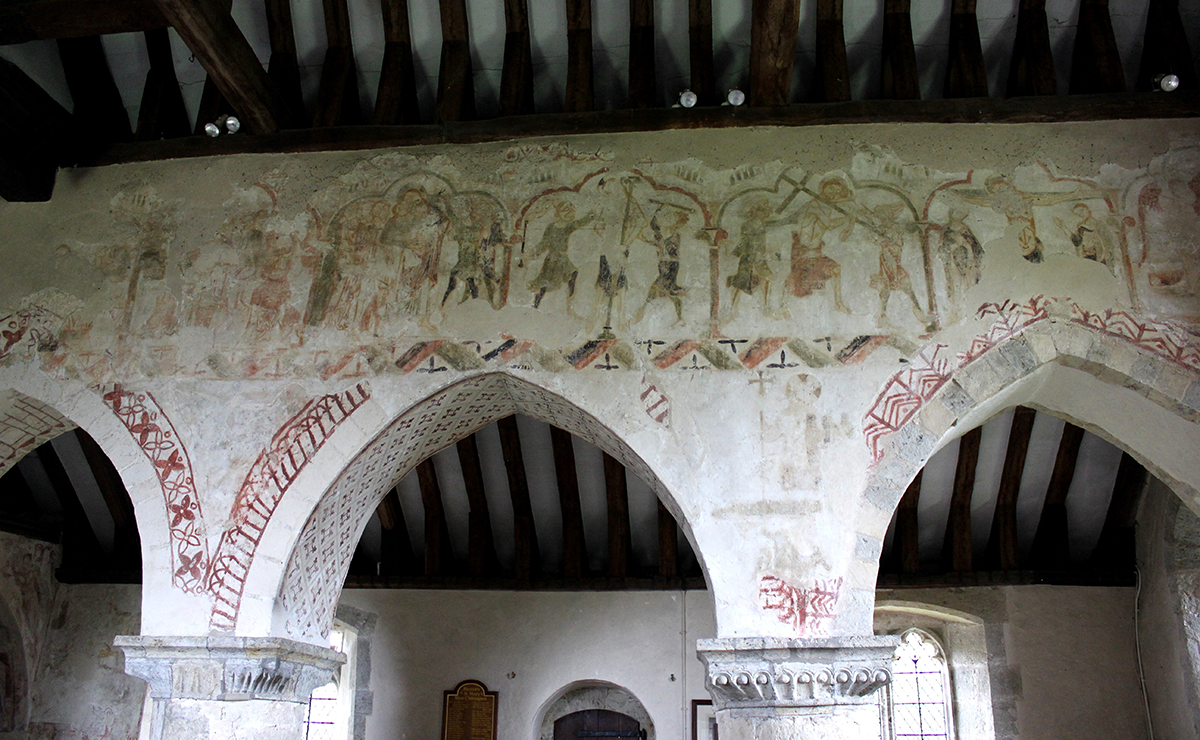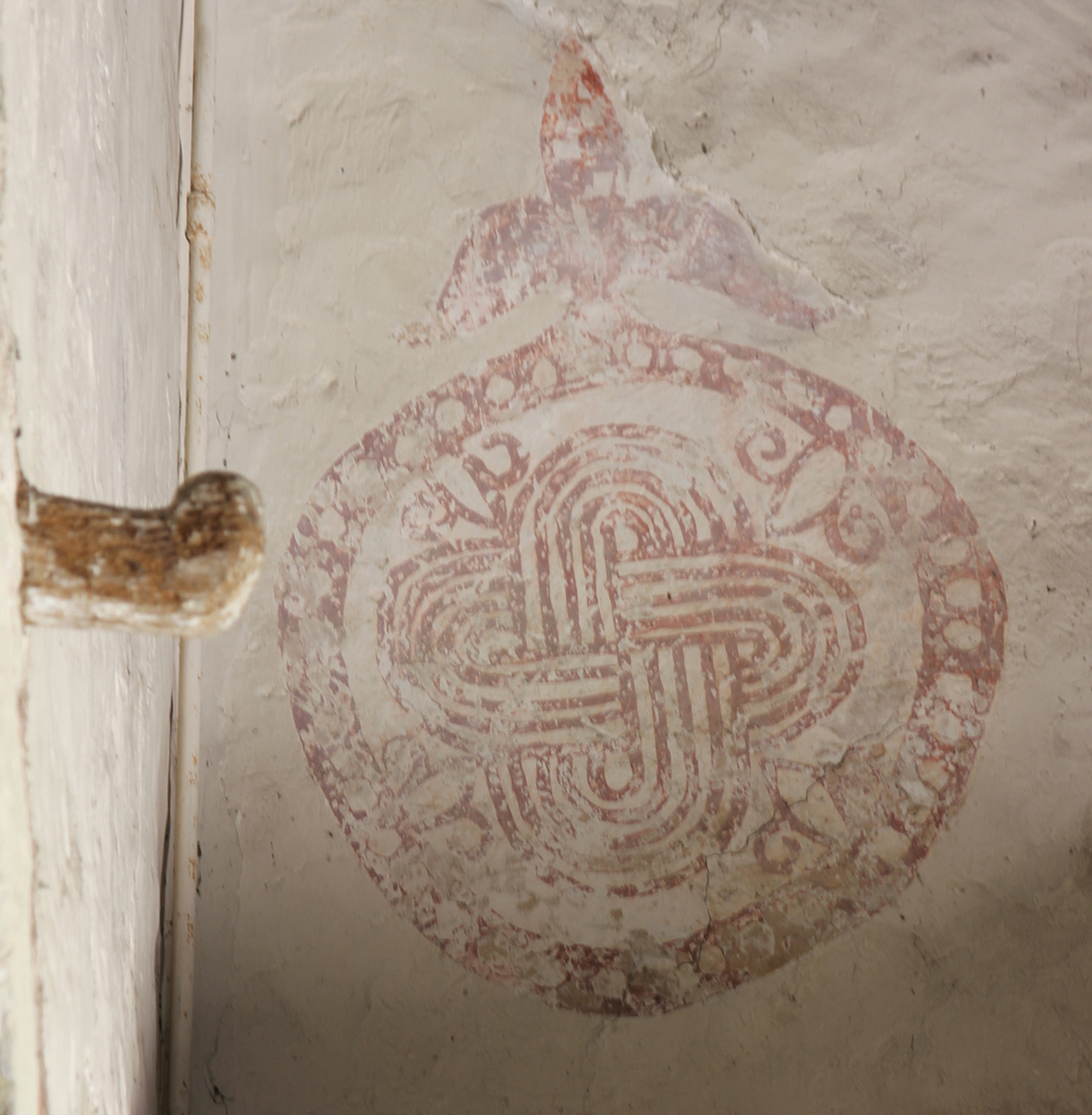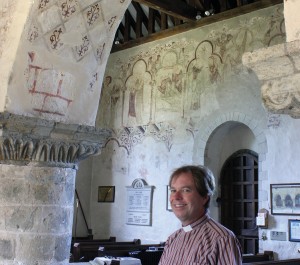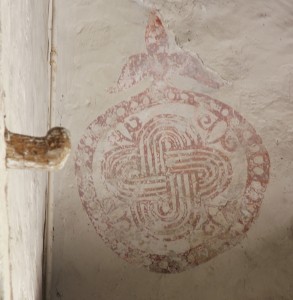
Amongst the frescoes at St Mary’s parish church in West Chiltington, Sussex is the Easter story. They were uncovered in 1882. Contemporary 19th century records note their excellent colour. Conservation work was not undertaken until the 1930s.
Frescoes are wall paintings painted directly on to the plaster while it is still wet. The artist has to work quickly and as the plaster dries the pigments and image are fixed. This technique was used throughout the Renaissance in Italy and elsewhere.
Amongst the earliest paintings at St Mary’s is the cross motif formed from an endless rope knot. This beautiful cross is easily missed and forms part of a circular medallion in the recess over the east end of the South Aisle. Such crosses are known in Roman mosaics and wall paintings. In Sussex the pavement at Fishbourne Roman Villa contains a similar emblem. However, its significance at West Chiltington, for the moment, remains unknown. There are trumpeting angels depicted on the arch below which overlay censing angels offering thanks and praise to God.

On the north side of the arcade in the nave is a cycle of frescoes which tell the Easter story from Jesus’ triumphal entry into Jerusalem on a donkey as the crowds lay palm leaves before him, to his resurrection on the first Easter Day. Illustrated here are depictions of the Last Supper, Christ washing the feet of his disciples, the betrayal of Jesus in the garden of Gethsemane by Judas Iscariot’s kiss, the flagellation of Christ, the carrying of the Cross and the Crucifixion. The scenes are portrayed within a series of three painted lobed arches resting on slender columns and capitals. The influence of the Gothic can be seen in the figures whose fluidity convey genuine humanity. Compassion and suffering are clearly discernable in the depictions of Christ and contrasts with the expressions on the faces of his tormentors. The directness of these paintings still powerfully communicate these familiar Gospel narratives even in their now faded hues.
They reside in a working building at the heart of its community for some 800 years and speak of a narrative common to us all. St Mary’s, West Chiltington is open every day – a generous place to find a punctuation mark and pray in a busy day. Easter services will be held at 2.00pm on Good Friday with Holy Communion on Easter Sunday at 8.00am and 10.00am all are welcome. For more information go to www.stmaryswestchilt.co.uk.


